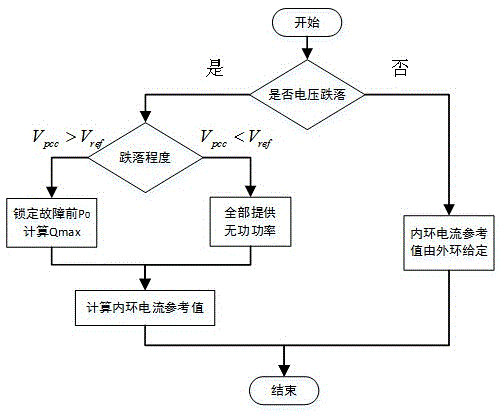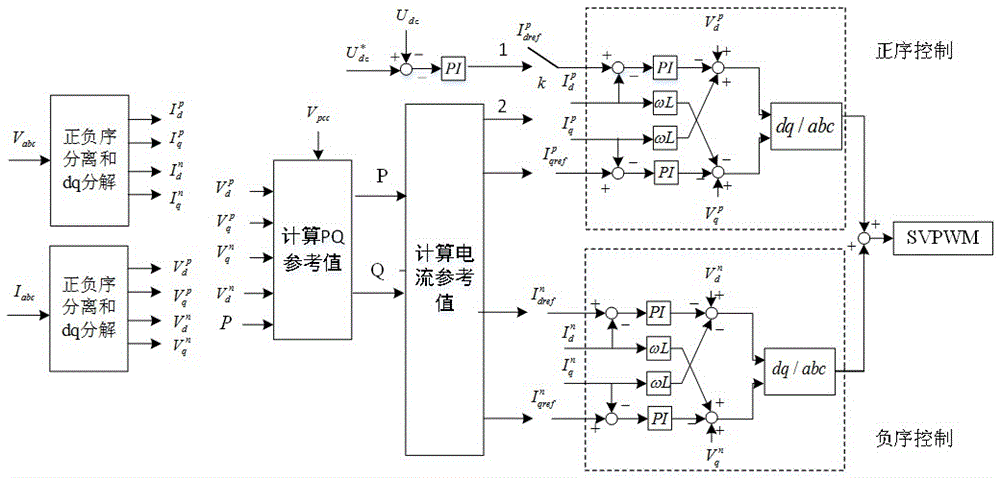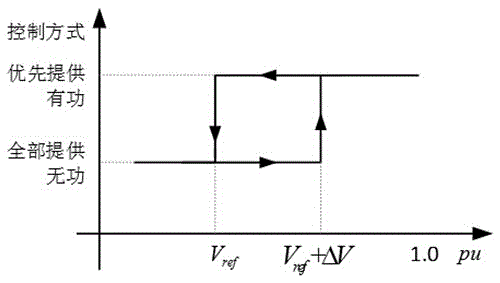Photovoltaic low-voltage crossing method containing reactive power current injection
A low-voltage ride-through and current injection technology, applied in the direction of AC network voltage adjustment, reactive power compensation, electrical components, etc., can solve problems such as grid fault range expansion, grid collapse, power loss, etc. The effect of providing reactive power
- Summary
- Abstract
- Description
- Claims
- Application Information
AI Technical Summary
Problems solved by technology
Method used
Image
Examples
Embodiment Construction
[0012] The present invention will be further described below in conjunction with the drawings. As attached figure 1 As shown, the present invention has several key steps:
[0013] 1) If the voltage drop at the grid connection point is not detected, the photovoltaic inverter will be connected to the grid with a power factor of 1; if the voltage drop at the grid connection point is detected, the degree of voltage drop will be judged.
[0014] 2) If the voltage drop is small (the measured positive sequence voltage per unit value of the photovoltaic grid connection point is greater than or equal to the threshold V ref ), then set the output active power P to P 0 , And according to the active power P 0 And the current constraint conditions of the photovoltaic inverter to calculate the maximum reactive power Q that can be output max , And set to Q; otherwise, all the photovoltaic grid-connected inverters will output reactive power and no active power, that is, P=0, Q max .
[0015] 3) Ca...
PUM
 Login to View More
Login to View More Abstract
Description
Claims
Application Information
 Login to View More
Login to View More - Generate Ideas
- Intellectual Property
- Life Sciences
- Materials
- Tech Scout
- Unparalleled Data Quality
- Higher Quality Content
- 60% Fewer Hallucinations
Browse by: Latest US Patents, China's latest patents, Technical Efficacy Thesaurus, Application Domain, Technology Topic, Popular Technical Reports.
© 2025 PatSnap. All rights reserved.Legal|Privacy policy|Modern Slavery Act Transparency Statement|Sitemap|About US| Contact US: help@patsnap.com



